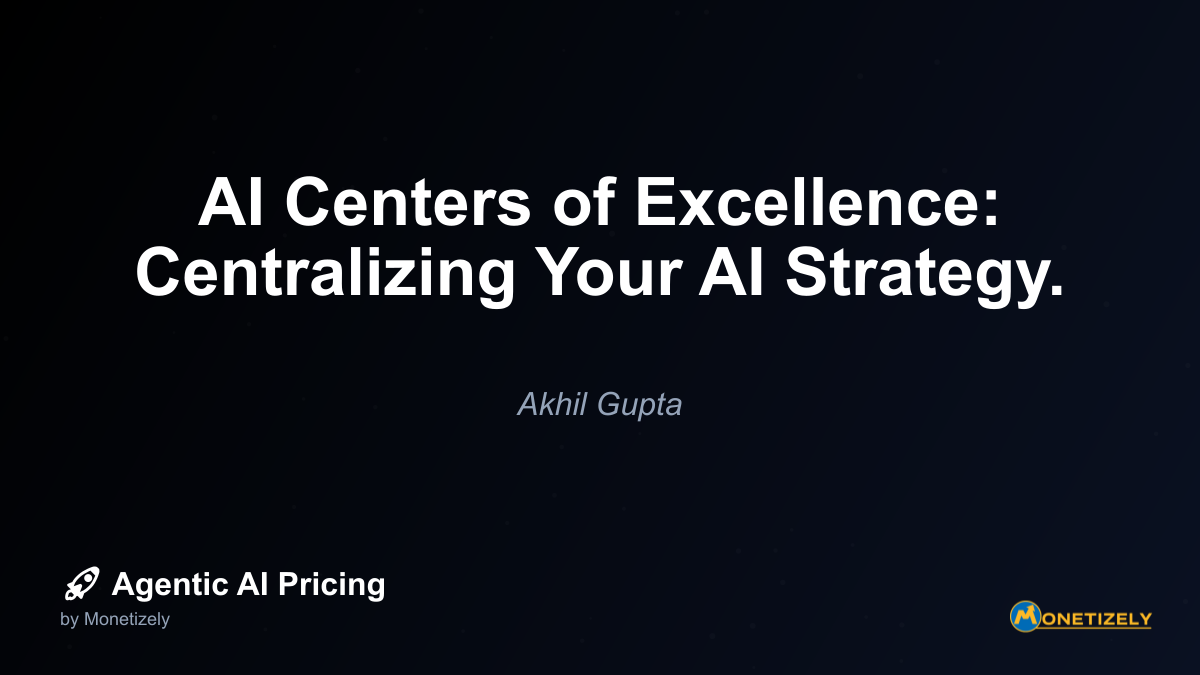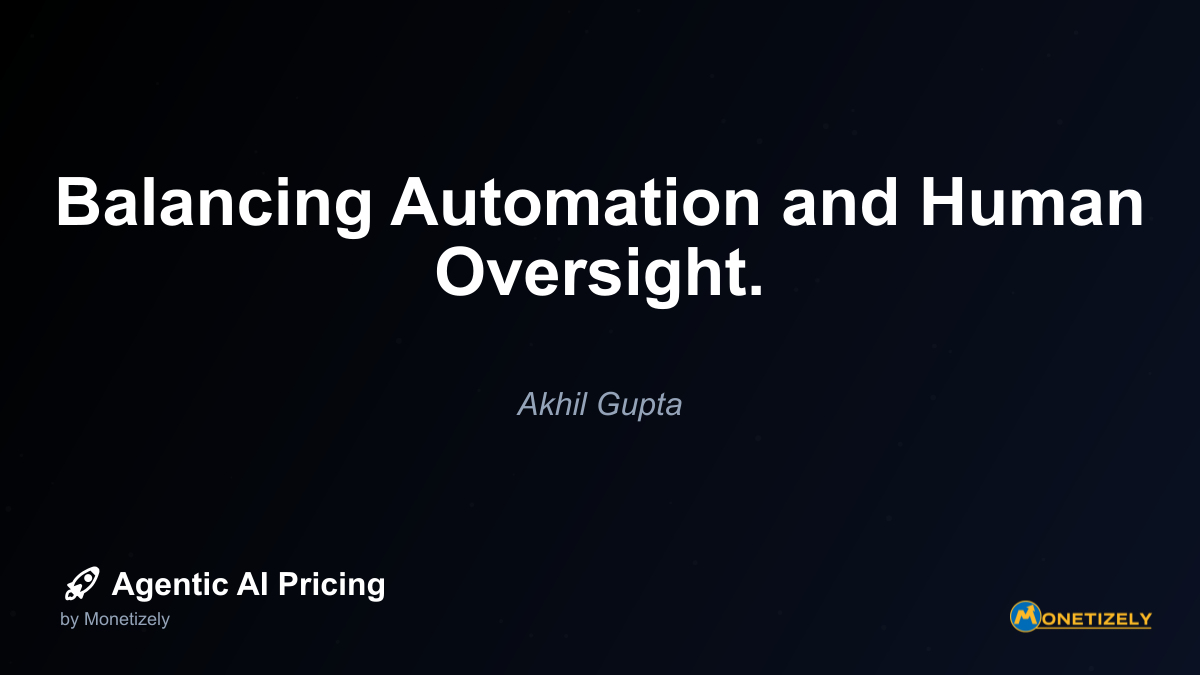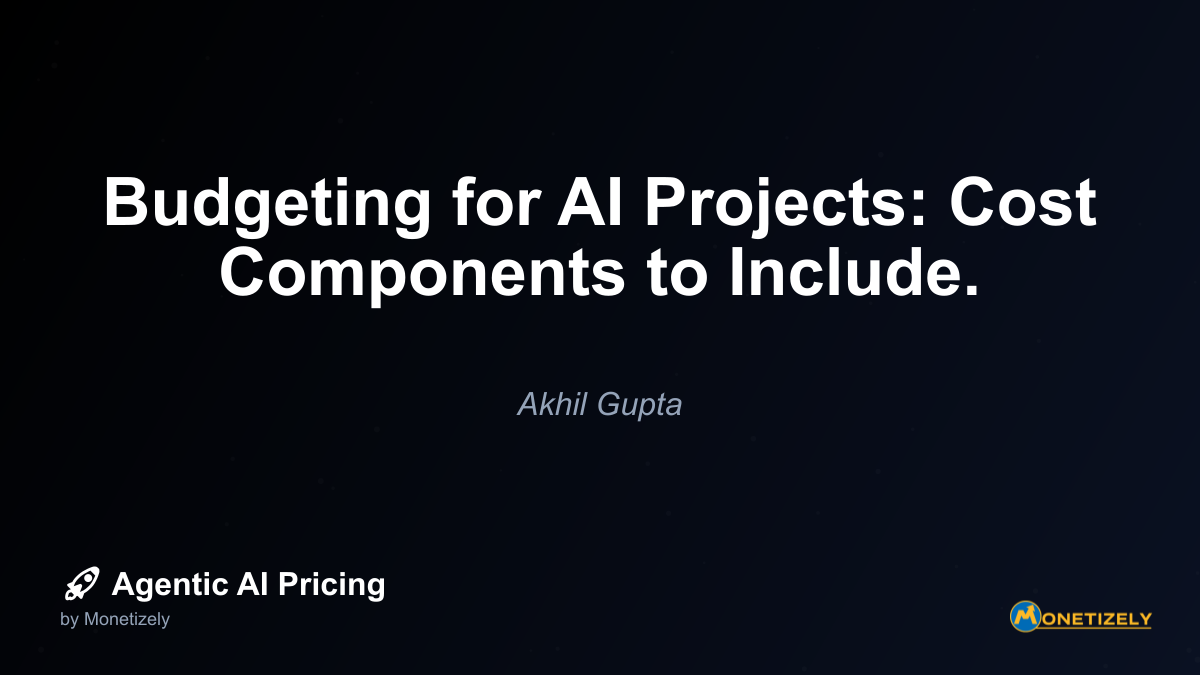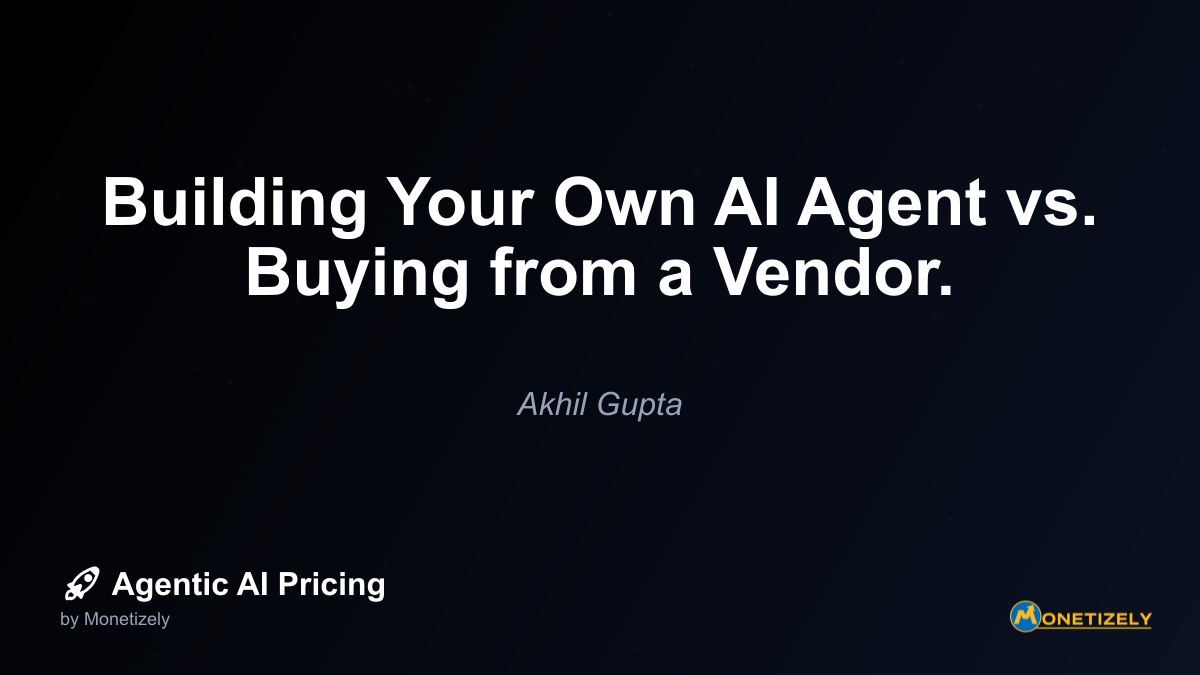· Ajit Ghuman · Implementation Strategies · 6 min read
Maintaining AI Systems: Updates, Monitoring, and Support
AI and SaaS Pricing Masterclass
Learn the art of strategic pricing directly from industry experts. Our comprehensive course provides frameworks and methodologies for optimizing your pricing strategy in the evolving AI landscape. Earn a professional certification that can be imported directly to your LinkedIn profile.
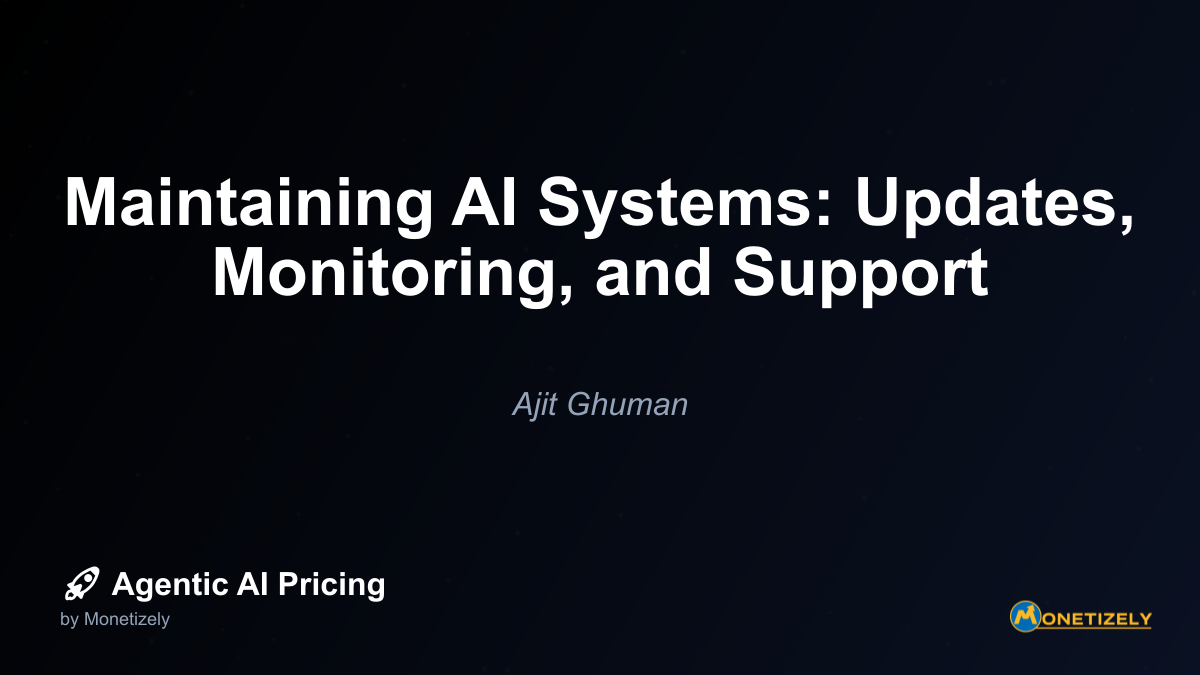
Prioritizing Improvements
With limited resources, organizations must prioritize improvement efforts. Consider factors such as:
- Business impact: Which improvements will most significantly affect key business metrics?
- User needs: Which enhancements will address the most pressing user pain points?
- Implementation complexity: How difficult and resource-intensive is each improvement?
- Strategic alignment: How well does each improvement align with long-term business goals?
A formal prioritization framework, such as a weighted scoring system, can help make these decisions more objective and transparent.
Implementation Approaches
Improvements to AI systems can be implemented through various approaches:
- Model retraining: Using new data to improve the underlying AI model
- Parameter adjustments: Fine-tuning the system’s configuration
- Feature enhancements: Adding new capabilities
- Process improvements: Changing how the system integrates with business processes
- User interface refinements: Making the system more intuitive and user-friendly
For agentic AI systems, improvements should focus particularly on enhancing decision quality, appropriate autonomy levels, and alignment with business objectives.
Building a Comprehensive Maintenance Plan
Effective AI system maintenance requires a structured approach that integrates updates, monitoring, error resolution, support, and continuous improvement into a cohesive plan.
Key Components of an AI Maintenance Plan
A comprehensive maintenance plan should include:
- Roles and responsibilities: Who is accountable for different aspects of maintenance
- Update schedule and procedures: When and how updates will be applied
- Monitoring framework: What will be monitored, how, and by whom
- Error resolution protocols: How issues will be detected, triaged, and resolved
- Support structure: How users will receive assistance
- Improvement process: How enhancements will be identified and implemented
- Documentation requirements: What information will be recorded about maintenance activities
- Budget and resources: What financial and human resources are allocated to maintenance
The plan should be documented and regularly reviewed to ensure it remains aligned with business needs and technical realities.
Adapting Maintenance for Different AI System Types
Maintenance approaches should be tailored to the specific type of AI system:
- Customer-facing AI agents require robust monitoring of user satisfaction and careful management of updates to avoid disrupting user experience
- Internal business process automation systems need close alignment with operational metrics and clear protocols for handling exceptions
- Decision support systems demand rigorous verification of decision quality and clear processes for human oversight
- Predictive analytics systems require regular evaluation of prediction accuracy and mechanisms for incorporating new data
Each type presents unique maintenance challenges that should be addressed in your plan.
Overcoming Common AI Maintenance Challenges
Organizations often encounter several challenges when maintaining AI systems. Being aware of these challenges and having strategies to address them is essential for long-term success.
Challenge 1: Data Drift and Model Degradation
AI systems are trained on specific data sets, but real-world data changes over time. This “drift” can cause model performance to degrade gradually.
Solution strategies:
- Implement regular model performance evaluations
- Establish thresholds that trigger retraining
- Create processes for collecting and incorporating new training data
- Consider automated retraining pipelines for systems with rapid data evolution
Challenge 2: Balancing Stability and Improvement
Organizations must balance the need for system stability with the desire for continuous improvement.
Solution strategies:
- Implement staged deployment processes for updates
- Use A/B testing to validate improvements before full deployment
- Establish clear rollback procedures for problematic updates
- Define change windows that minimize business disruption
Challenge 3: Maintaining Specialized Knowledge
AI systems often require specialized knowledge that may be concentrated in a few individuals, creating risk if those individuals leave the organization.
Solution strategies:
- Document system architecture, configuration, and maintenance procedures
- Cross-train multiple team members on maintenance tasks
- Consider partnership with vendors or consultants for specialized support
- Implement knowledge management systems to capture and share expertise
Challenge 4: Managing Costs
AI maintenance costs can escalate, particularly for complex systems or those requiring frequent updates.
Solution strategies:
- Develop clear cost tracking for maintenance activities
- Implement automation for routine maintenance tasks
- Prioritize improvements based on ROI
- Consider managed service options for specialized maintenance needs
- Regularly review and optimize resource allocation
Leveraging Vendor Relationships for Effective Maintenance
For organizations using commercial AI platforms or models, vendor relationships play a crucial role in maintenance effectiveness.
Selecting Vendors with Strong Support
When evaluating AI vendors, consider their maintenance and support capabilities:
- Update frequency and quality: How often do they release updates, and how well are these updates tested?
- Support options: What levels of support do they offer, and at what cost?
- Documentation quality: How comprehensive and clear is their documentation?
- Community resources: Is there an active user community for knowledge sharing?
- Professional services: Do they offer specialized assistance for complex issues?
These factors should be evaluated alongside the core functionality of the AI solution.
Establishing Effective Vendor Communication
Once you’ve selected a vendor, establish clear communication channels and expectations:
- Designate primary contacts on both sides
- Schedule regular check-ins to discuss performance and issues
- Define escalation procedures for critical problems
- Maintain awareness of the vendor’s product roadmap
- Provide feedback on system performance and feature requests
Strong vendor relationships can significantly enhance your maintenance capabilities, particularly for complex or specialized AI systems.
The Future of AI System Maintenance
As AI technology continues to evolve, maintenance approaches will need to adapt. Several trends are likely to shape the future of AI maintenance:
Increased Automation
AI systems will increasingly maintain themselves, with capabilities such as:
- Automated anomaly detection and diagnosis
- Self-healing for common issues
- Autonomous performance optimization
- Automatic data quality monitoring
These capabilities will reduce the manual effort required for maintenance while potentially improving system performance and reliability.
Enhanced Explainability
As AI systems become more complex, understanding why they make specific decisions becomes more challenging. Future maintenance approaches will likely include:
- Better tools for visualizing AI decision processes
- More sophisticated methods for tracking decision lineage
- Improved techniques for explaining AI behaviors to non-technical stakeholders
These enhancements will make it easier to diagnose issues and maintain trust in AI systems.
Standardized Maintenance Frameworks
As the AI industry matures, expect to see more standardized approaches to maintenance:
- Industry-specific best practices
- Certification programs for AI maintenance professionals
- Standardized metrics for evaluating maintenance effectiveness
- Regulatory requirements for specific maintenance activities
These standards will help organizations benchmark their maintenance practices and ensure they meet industry expectations.
Conclusion: Maintenance as a Strategic Investment
Effective maintenance of AI systems should be viewed not as a cost center but as a strategic investment that preserves and enhances the value of your AI assets. By implementing comprehensive maintenance practices—including regular updates, robust monitoring, effective error resolution, responsive support, and continuous improvement—organizations can maximize the return on their AI investments while minimizing risks.
For agentic AI systems in particular, proper maintenance is essential to ensure that these systems continue to make appropriate decisions, operate with the right level of autonomy, and deliver measurable business value. As these systems become more central to business operations, the quality of maintenance will increasingly differentiate successful implementations from unsuccessful ones.
Organizations that approach AI maintenance strategically, with adequate resources and well-defined processes, will be better positioned to realize the full potential of their AI investments and adapt to the rapidly evolving AI landscape.
Co-Founder & CEO
Ajit is the author of Price To Scale, a top book on SaaS Pricing and is the Founder of Monetizely. Ajit has led and worked in pricing and product marketing at firms like Twilio, Narvar and Medallia. His work has been featured in Forbes and VentureBeat. Ajit regularly consults with software companies from Seed stage to post-IPO on pricing strategy. Ajit is also a highly-rated co-instructor for 'The Art of SaaS Pricing and Monetization' on Maven.
Pricing Strategy Audit
Let our experts analyze your current pricing strategy and identify opportunities for improvement. Our data-driven assessment will help you unlock untapped revenue potential and optimize your AI pricing approach.

